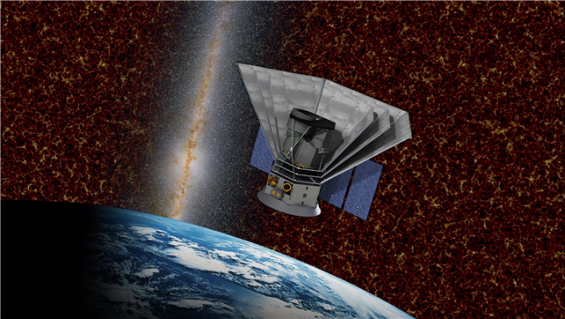Spearx space telescope concept. Provided by the Ministry of Science and Technology Information and Communication
–
–
The infrared space telescope’Spear x’that can take a picture of the entire universe has entered the production stage. A total of 12 organizations including the Korea Astronomical Research Institute and the National Aeronautical and Space Administration (NASA) Jet Propulsion Research Institute (JPL) participate in the development of Sphere X. It is scheduled for launch in 2024. It is expected that about 2 billion individual celestial bodies in the universe can be observed in 102 colors.
The Ministry of Science and ICT and Moon-Yeon Cheon announced on the 6th that they received final approval for the design of Sphere X from NASA.
The Sphere X is a space telescope that can simultaneously obtain infrared images and spectral information over a wide observation area. Infrared observation is useful when studying the formation of galaxies and stars far from Earth. This is because the red shift pushed toward the longer wavelengths of light emitted by distant galaxies and stars is large. Spectroscopy refers to information about the wavelength of light, and you can get detailed information about celestial bodies. In order to measure the cosmic giant structure, it is necessary to measure how quickly individual celestial bodies are moving away from the earth, and for this, spectral information of individual celestial bodies is essential.
‘Image spectroscopy technology’ is applied to Sphere X. Image spectroscopy is a technology that combines image observation that can simultaneously observe a large area and spectral observation that measures the change in brightness according to the wavelength of individual celestial bodies. The entire universe can be observed in detail in 102 colors. With observational information, it is expected to be able to compile a spectral list of about 2 billion individual celestial bodies in space.
By reconstructing the observation image of Sphere X and the emission spectrum of each celestial body, three-dimensional spatial information of the universe can also be obtained. Immediately after the Big Bang, it is expected to be a clue to solving the mystery of infrared cosmic background radiation that contains information on the theory of cosmic expansion by the rapid expansion of space and galaxy formation and evolution. It is expected that it will be helpful in the exploration of planetary systems in which life forms such as Earth can exist by creating a distribution map of water and carbon dioxide that exist as ice in our galaxy and space.
The Spearx project is organized by the California Institute of Technology, and 12 organizations including Cheonmunyeon, NASA JPL, Ball Aerospace, Arizona State University, and Ohio State University are participating. Moon-Yeon Cheon has 30 researchers participating in device development, data processing software, and scientific research. It is the only international organization that is not an American organization to participate. The space exploration technology using infrared rays such as the Near Infrared Imaging Spectroscopy (NISS) developed by Chun Moon-yeon was highly regarded. The applied linear spectral filter will be used for the actual Sphere X.
Spearx Korea Research Director Jung Woong-seop, Principal Researcher Cheon Mun-yeon, said, “With the experience of independent development of NISS, the past next-generation small satellite No. 1 science vehicle, we are able to participate as the only international research institute in the joint development of Spearx.” Through this, the researchers gained confidence in developing a world-class space telescope.”
“The image spectroscopy observation technology is a state-of-the-art technology that can be used in various fields such as resource exploration, climate and natural disaster monitoring, as well as the development of this spear x space telescope,” said Lee Chang-yoon, director of the Ministry of Science and ICT We plan to expand continuous joint research with world-class research institutes to secure core technologies that can be achieved.”
– .


